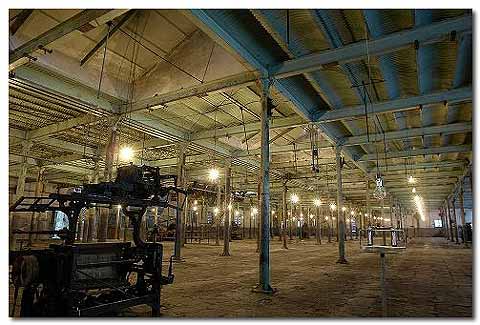Asociación Civil Puebla 2031 ,
Nov 24, 2006 - Jan 28, 2007
Puebla, Mexico
Plataforma Puebla 2006
by Rubén Bonet
Plataforma 2006 [Platform 2006] is a project involving contemporary art and new forms of technology, bringing together the work of more than one hundred artists in thirty-two events that took place in different venues. Some, such as La Constancia Mexicana, formerly a textile factory, are of great symbolic value to the city. This festival, under the artistic direction of Proyectos Hélix, the curatorship of Príamo Lozada and Bárbara Perea, and the executive direction of Pedro Ocejo, representing Puebla 2031, a non-profit organization, is a milestone in Mexico in terms of the synergy of efforts and responsibilities, since it involves different institutional levels. Under the initiative of
Puebla 2031, which was also in charge of coordination and production, the event was able to secure state and municipal funds, since both levels of government were very interested in promoting the image of the city of Puebla while attracting a broader public to what is hopefully a reoccurring event. Besides the traditional industrial setting, a technological intervention was added, through contemporary art as this latter dimension has no history in the city. To that end, admittance to all the extensive programmatic activities, exhibitions and concerts were free, while groups of young people, mostly university students, were on hand at different venues to provide information. To ensure attendance and support, a campaign was carried out in schools to promote visits by groups of students as part of their school activities, while the event was also widely publicized in different media, particularly those visible on city streets, such as posters and awnings at bus stops. A permanent information booth on activities, providing links to web sites and a table with art books and printed information on Plataforma was also set up in the city’s main plaza for that purpose. Plataforma 2006 was based on Heterotopías [Heterotopias], a concept created by Foucault in reference to utopias that have effectively been realized, types of places that are out of place, although they can in fact be located. It also refers to the possible -non-linear - times alluded to by Borges in El jardín de los senderos que se bifurcan [The garden of forking paths], and Charles Babbage’s research on the abacus, which was to pave the way for cybernetics. The insertion of Plataforma’s activities in the city took place at several levels due to the diversity of spaces and artistic approaches. La Constancia Mexicana, the area’s foremost industrial symbol, and the first textile factory in Latin America, was thus the site for Nodo Nuevas Tecnologías [New Technologies Node], comprising pieces by the leading Mexican artists - or artists creating in Mexico - in this field, among them Rafael Lozano-Hemmer, Arcángel Constantini,, Alfredo Salomón, Enrique Rosas, Ximena Cuevas, Ariel Guzik, Mariana Rondón, Iván Puig and Gilberto Esparza. These pieces, focusing on technological speculation, provided a space for reflection on our relationship with technology, often highlighting its playfulness, and the way that new relationship is shaping a new reality (social, economic, productive). This is evidenced by Arcángel Constantini’s Spark un-plug 3.3=9, a matrix of spark plugs and voltage arcs that crackled, creating cells of different colors and intensities in keeping with the pressure exerted on sensors by an enormous block of ice. Made ex profeso, the piece prompts reflections on the warming of the earth’s poles, the use of electric power as a counterpart to the poisoned legacy of the Industrial Revolution and the use of non-renewable energy sources. Another is Rafael Lozano-Hemmer’s Almacén de Corazonadas [Warehouse of Hunches]: in one of the venue’s main rooms, the artist placed several rows of large light bulbs of varying voltage and a pedestal with two sensors that one holds in one’s han
|













